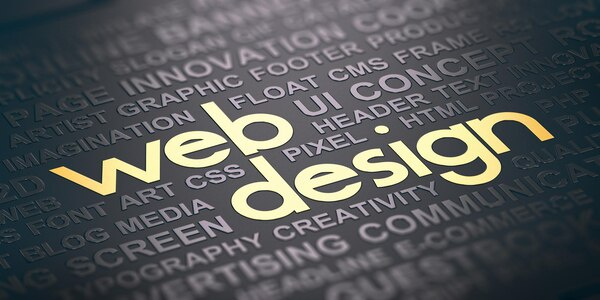Innovative Web Design Trends in 2023

As we venture further into 2023, the landscape of web design continues to evolve at a rapid pace. Designers are constantly pushing the boundaries to create captivating, user-friendly, and functional websites. Below are some of the most innovative web design trends that are defining the digital realm this year.
1. Dark Mode and Low Light UX
Dark mode has transcended from a mere aesthetic choice to a staple in modern web design. With many users accustomed to dark-themed interfaces on their devices, websites are now adopting dark mode to reduce eye strain and enhance the visual appeal. Low light UX goes hand-in-hand with dark mode, focusing on creating legible and accessible content in low-light environments.
2. Neumorphism
Neumorphism merges skeuomorphism and flat design, creating interfaces that appear soft and extruded. This trend leverages subtle shadows and highlights to give UI elements a more tactile, almost 3D appearance. The result is a clean, modern look that still provides depth and distinction among elements.
3. Minimalism and White Space
The principle of "less is more" continues to gain traction within the web design community. However, current minimalist designs are more about strategic use of white space rather than simply stripping down to essentials. This approach not only assists in directing user attention but also improves readability and overall user experience.
4. Unique Typography
Typography isn't just about readability anymore; it's becoming a focal point of website aesthetics. Bold, custom fonts, oversized text, and creative typographic layouts are trending, giving designers a tool to express brand identity and grab user attention.
5. Micro-Interactions
These small design elements play an outsized role in enhancing user experience. Micro-interactions include animations, button states, and other interactive components that respond to user actions in engaging, unobtrusive ways. They provide immediate feedback, making the digital experience more intuitive and enjoyable.
6. Artificial Intelligence and Machine Learning Integration
AI and machine learning are translating into smarter web designs. From chatbots offering real-time assistance to personalized content recommendations, these technologies are making websites more responsive and tailored to individual user needs.
7. Augmented Reality Experiences
Augmented reality (AR) is extending beyond mobile apps into web design, providing dynamic, immersive experiences directly on websites. This holds enormous potential for e-commerce, allowing users to visualize products in their environments, thereby bridging the gap between physical and digital shopping experiences.
8. High-Quality Imagery and Video Backgrounds
Visual content continues to dominate web design, but the emphasis now is on using high-quality, authentic images and videos. These elements, especially when used as backgrounds, can help convey a brand's story more effectively and keep users engaged.
9. Asymmetrical Layouts
Gone are the days of strict grid-based designs. Asymmetrical layouts are gaining popularity for their ability to break the monotony and provide a unique user journey. This trend allows for more creative freedom, offering dynamic and unpredictable structures that capture user interest.
10. Voice User Interface (VUI)
With the advent of voice-activated devices and digital assistants, VUI is becoming an integral part of web design. Websites are now incorporating voice search functionality and voice commands, making the browsing experience faster and more accessible to a broad audience.
11. Sustainability and Eco-Friendly Design
Sustainable web design is not just a buzzword; it's a growing movement. This involves not only environmentally friendly hosting solutions but also designing websites that are energy-efficient and have a minimal carbon footprint. The goal is to create digital experiences that are not only effective but also mindful of their environmental impact.
Conclusion
The web design trends of 2023 are a testament to the ever-changing digital landscape. They reflect a blend of creativity, user-centricity, and technological advancement. Embracing these trends can not only enhance the visual appeal of websites but also improve functionality and user engagement. As we move forward, keeping an eye on these trends will be crucial for designers who aim to stay at the forefront of the industry.